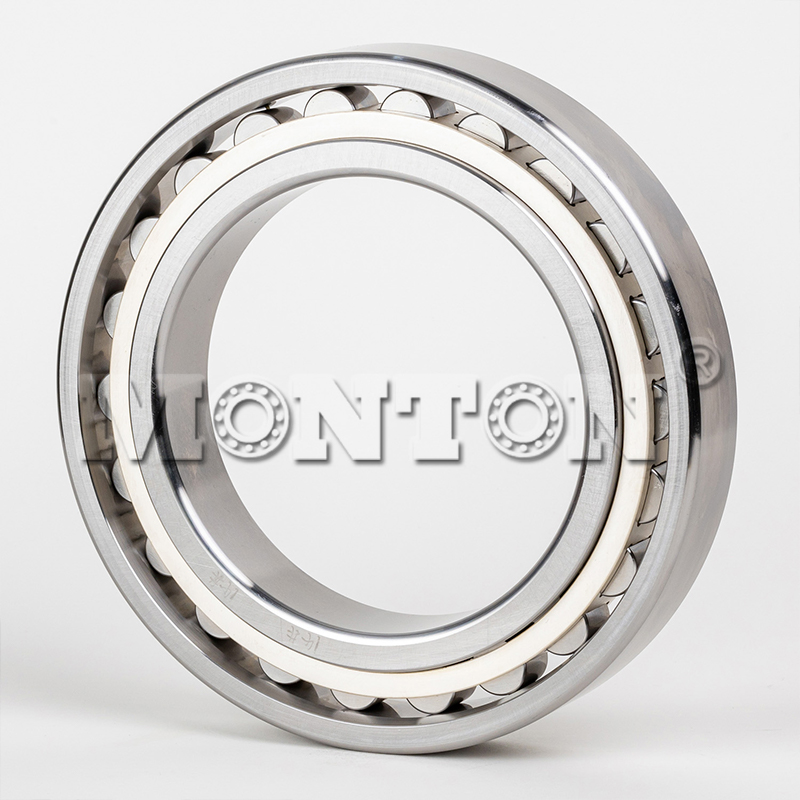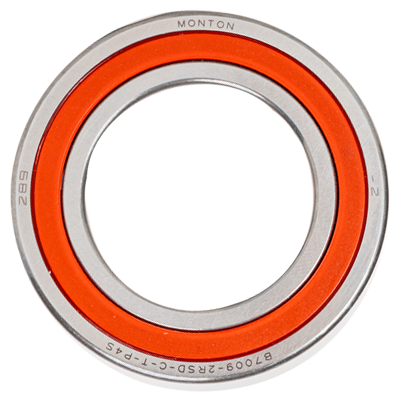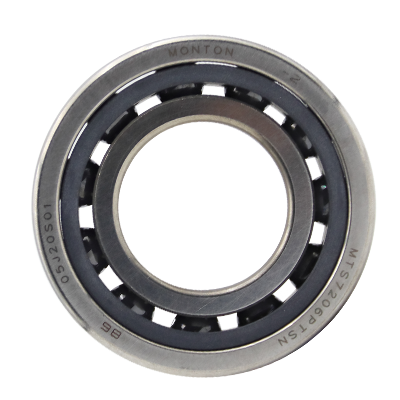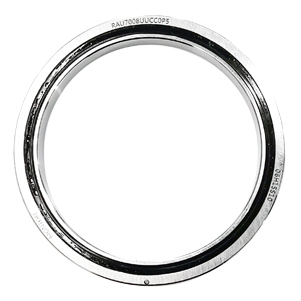Characteristics of Morgen High-Precision Roller Bearings for Wire Rod Blocks
Characteristics of Morgan High Speed Rolling Mill Bearings
The bearings used in Morgan high-speed wire rolling mill are a very special type of bearing, which is manifested in its unique design and usage requirements. It is precisely because of these characteristics that we are able to treat them the same as ordinary bearings.
1. Strong specificity
The specificity of MONTON high-speed rolling mill bearings is its prominent feature. On the Morgan high-speed rolling mill, each bearing position is assigned a position code and corresponds to a dedicated MONTON bearing model, which is absolutely not allowed to be confused. Similarly, on each MONTON bearing, in addition to its own model, there is a corresponding Kugen rolling mill position code. For example, in the gearbox, a bearing model MCS-140-106 CD corresponds to a position code of 162250-B; The bearing type on the roller shaft is MONTON7810-PD-5-B, corresponding to the position code 162250-J. It can be said that MONTON Company designs and manufactures specialized bearings based on the special conditions of each part of Morgan Rolling Mill, so its performance is inevitably superior to general bearings. Even bearings with the same accuracy and nominal size cannot be replaced. Someone has made such an attempt before. The result is naturally unsatisfactory. In practical use, identifying the location number is particularly important.
2. High precision
MONTON bearings belong to high-precision bearings and use the international standard P2 level.
For high-precision bearings, not only does it require high manufacturing accuracy, but it also requires high installation precision. Inner ring and The outer ring is marked with an eccentric high point mark. Before installing the bearing, it is necessary to measure the size of the shaft or hole to find the eccentric high point. When installing the bearing, the two eccentric high points of the shaft and the inner ring (or hole and outer ring) of the bearing should be overlapped. This can offset the machining deviation between the bearing and the shaft or hole, resulting in higher installation accuracy. For paired bearings, it is also required that the eccentric high point weights of the two bearings be installed together.
In addition, most thrust bearings are equipped with damping washers during installation and require the application of specified preloading force during installation. This type of damping washer can effectively solve the problem of backlash during bearing operation. If the clearance of ordinary bearings is too small, it may get stuck or the temperature may rise, while if it is too large, it can cause vibration. By adding damping pads, vibration can be eliminated and bearing damage caused by small clearance can be avoided. This not only improves the working accuracy of the bearing but also extends its lifespan.
3. Requirements for lubricating oil
Morgan high-speed rolling mill bearings also have high requirements for the selection of lubricating oil. It should have good anti emulsification performance, anti-wear performance, and the ability to withstand heavy loads, as well as rust prevention, copper corrosion prevention, and good oxidation stability and anti foaming performance. For this reason, the Morgan high-speed wire mill requires the use of 525 Mobil 525 lubricating oil, as this is a lubricating oil specially designed by Mobil to meet the requirements of Morgan high-speed wire mills. So far, Morgan high-speed wire mills have no exceptions.
4. Unique design of the cage
The cage of MONTON bearings in the Morgan high-speed rolling mill has a unique design, and all bearing cages are guided by inner rings, which is very different from the usual concept of high-speed bearings. It is generally believed that bearings guided by the inner ring are prone to poor lubrication during high-speed operation because the gap between the cage and the inner ring is small, and lubricating oil must be sprayed between the cage and the outer ring. Centrifugal force tends to throw oil towards the outer ring, making it difficult for the inner ring to lubricate. The outer ring guidance solves this problem by spraying oil between the inner ring and the rolling element. Then, centrifugal force throws the oil towards the outer ring, which lubricates both sides.
So why are all bearings guided by inner rings? Analyzing the working condition of the bearing, we can see that when the outer partition is fixed and the inner ring rotates, the cage guided by the outer ring must be driven by the rotating rolling element to rotate. The rolling element must overcome two frictional forces: one between the cage and the rolling element, and the other between the cage and the outer ring. This will greatly increase the wear on the contact surface between the rolling element and the cage. When the inner ring guides, the cage is driven to rotate by the inner ring, and the force exerted by the cage on the rolling element is greatly reduced, resulting in a significant reduction in wear. This can extend the lifespan of the bearings.

There are two types of structures for bearing retainers. In ball bearings, all are solid brass retainers, while in roller bearings, all are silver plated copper retainers. In the early days, many roller bearings also used brass solid cages, but after being used on high-speed rolling mills, they broke and worn out, and eventually all were replaced with silver plated copper cages. This is because the force on the inner and outer working surfaces of the roller is unbalanced, and when it rotates at high speed, it will generate axial vibration, which will cause impact force on the cage and damage it. And steel cages have good strength and toughness, which can meet the needs. Due to the inferior conductivity and wear resistance of steel cages compared to brass cages, the steel cages of bearings are all plated with silver to improve thermal conductivity and wear resistance.
Previous: Monton bearing official homepage
Next: Cross roller bearing


 English
English Russian
Russian Chinese
Chinese









